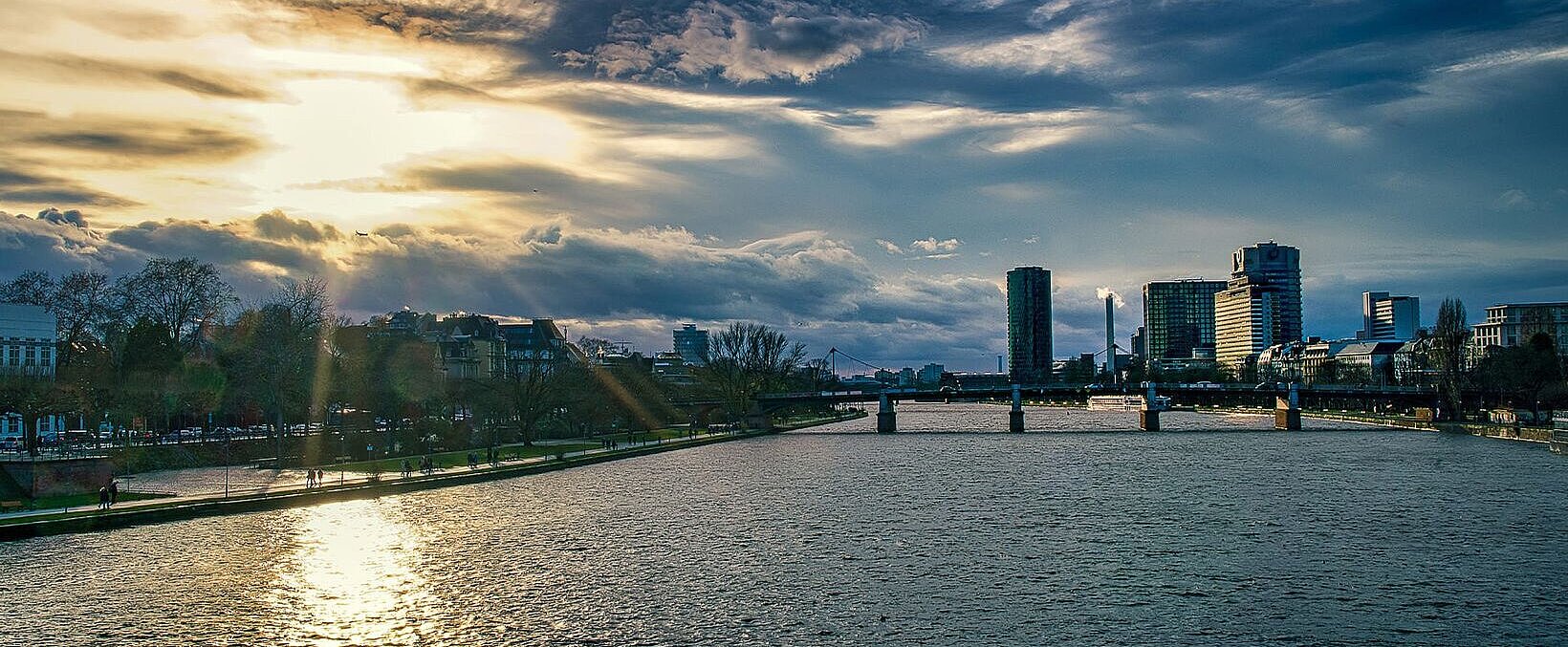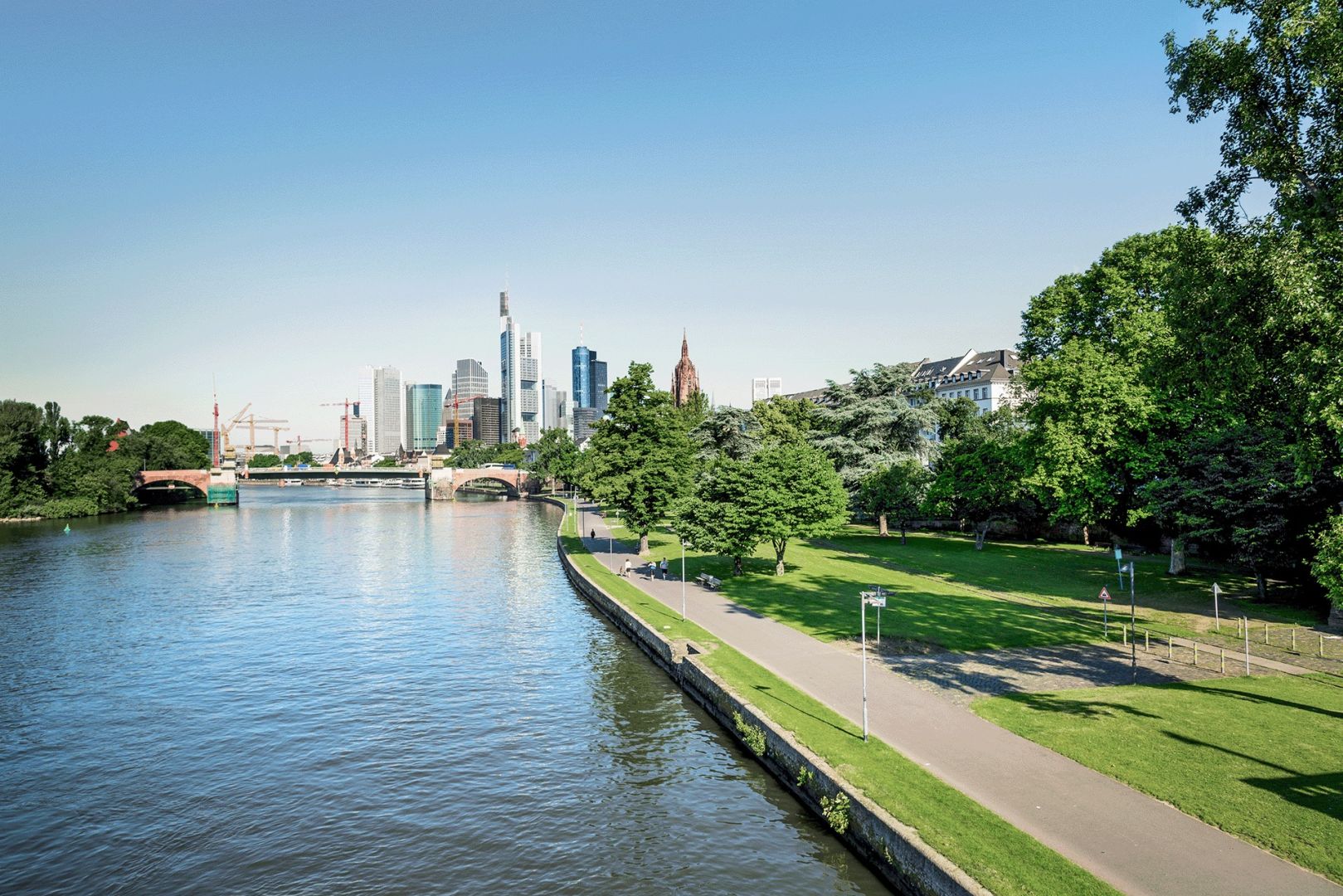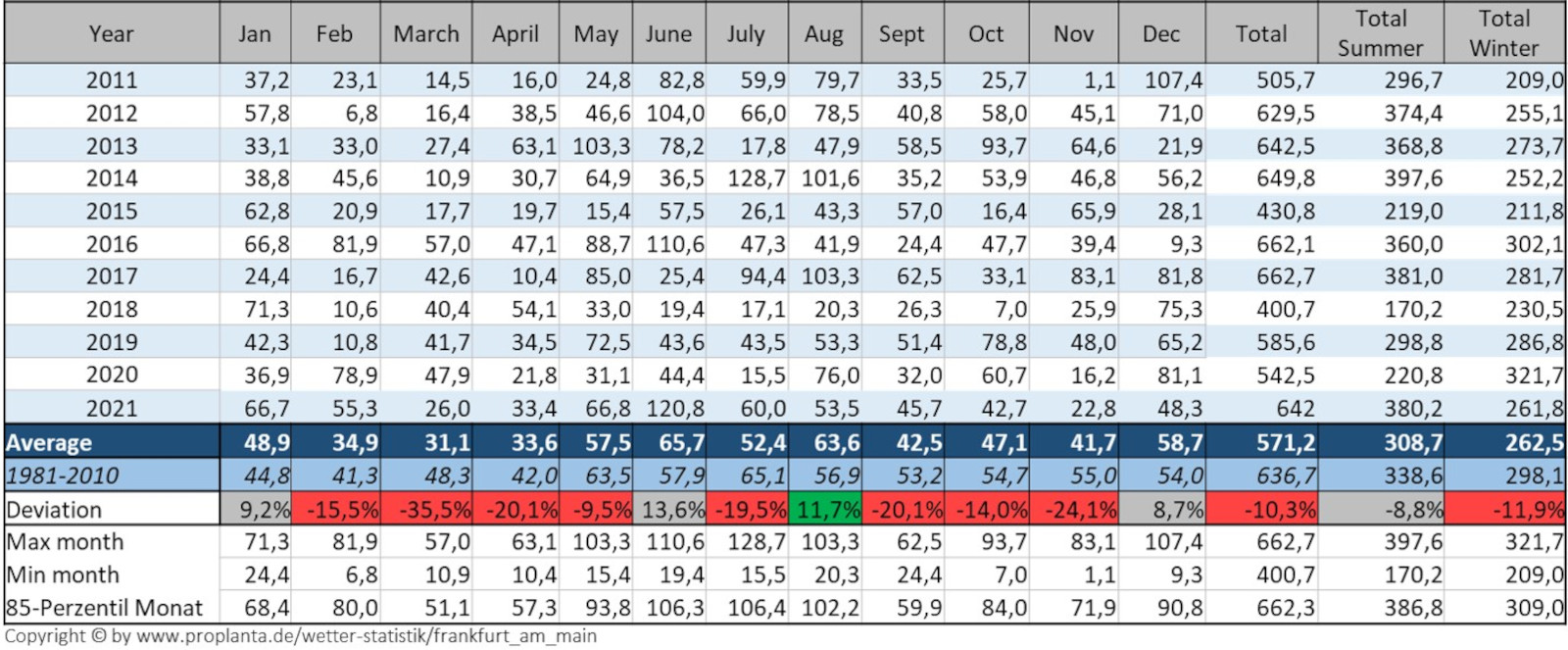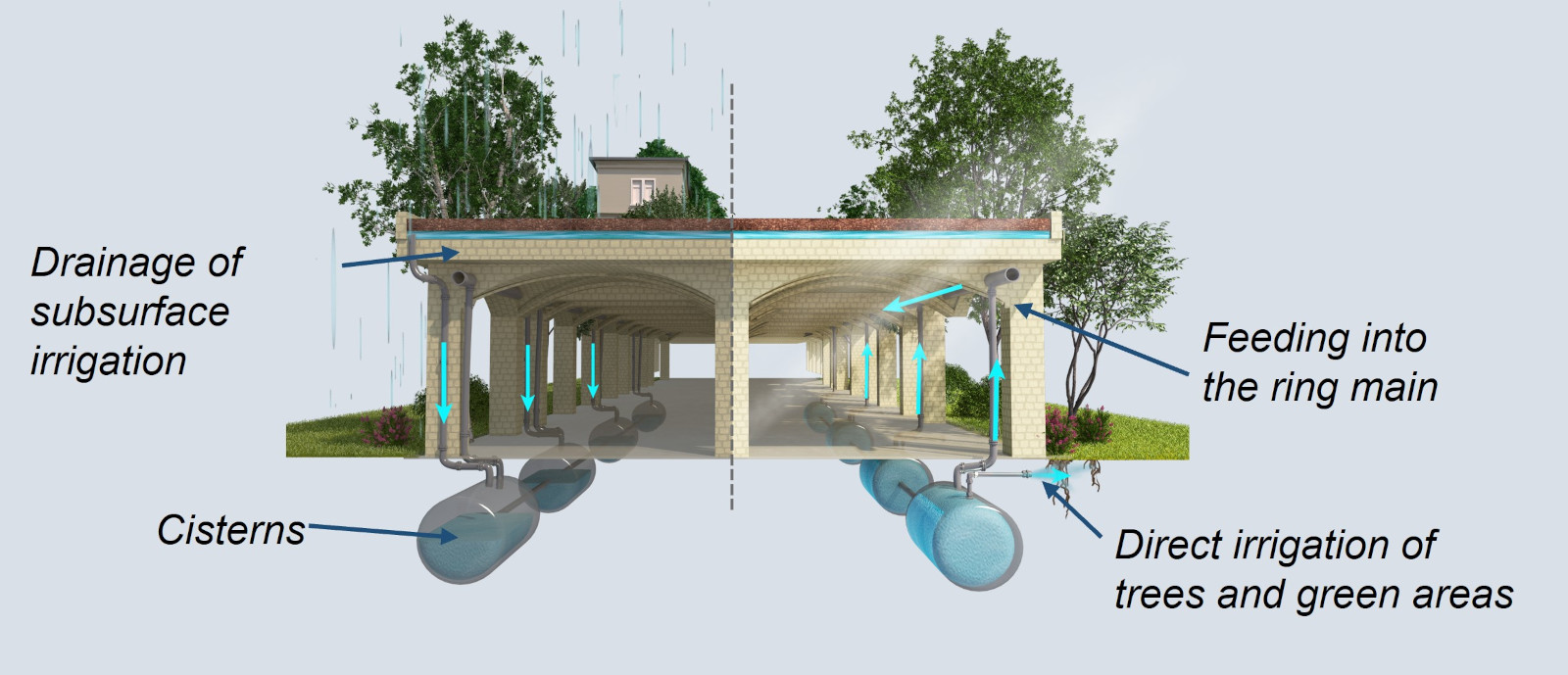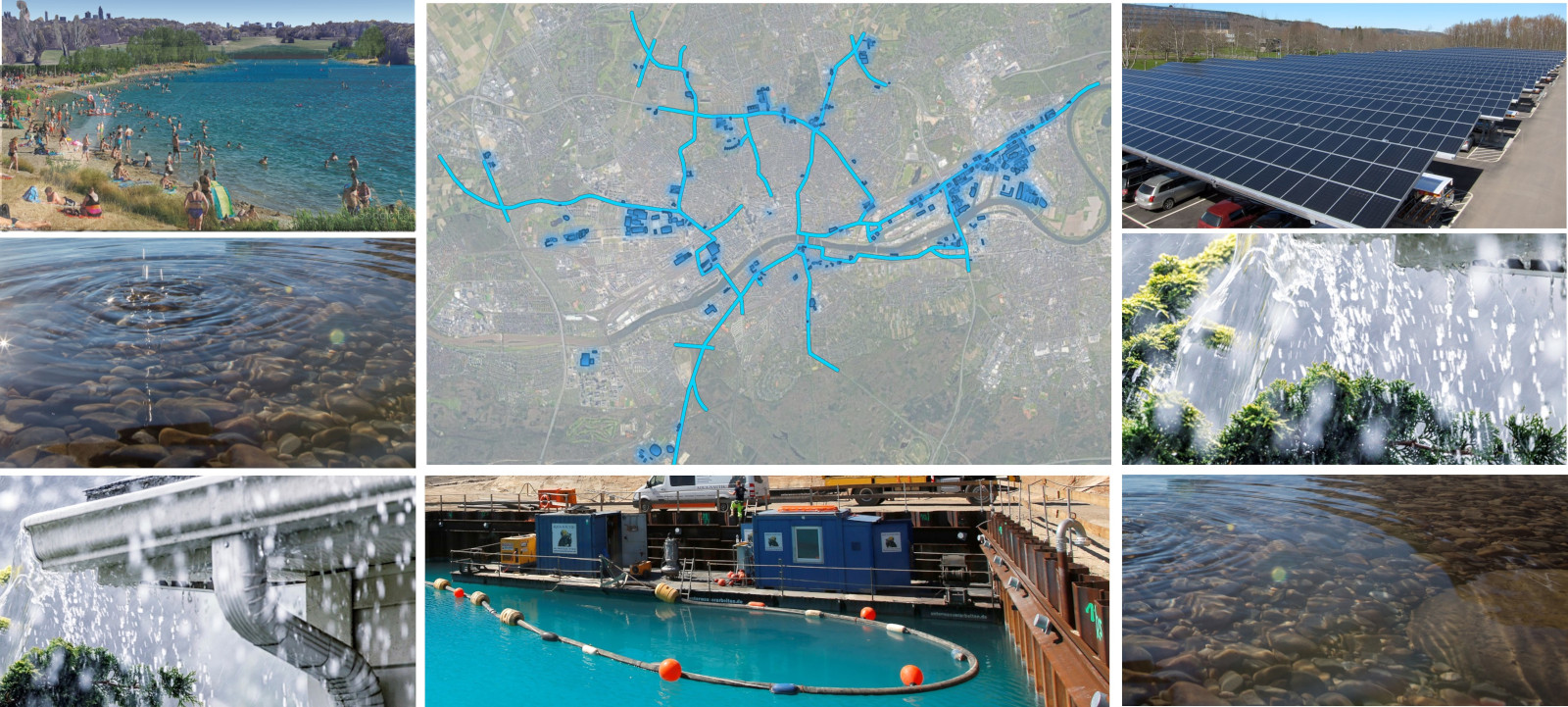Frankfurt becomes an even greener city thanks to the bridges
More than 1,000,000 square meters of green space will be created by the flower beds and meadows on the bridges alone. In addition, an unsealing plan provides for the creation of new green spaces on 40,000 square meters in the city: Where asphalt previously covered Frankfurt's ground, flower beds and meadows are to be created. In addition, around 1,000 new trees are to be planted in the city center. The challenge here is that all of this needs to be watered.
Approximately 600,000 - 800,000 cubic meters of irrigation water are estimated to be needed for this purpose, depending on the dryness of a year. Groundwater and rainwater should therefore be kept in the city so that it is available for watering the plants.
For this purpose, a pipe system for irrigation water separate from the city‘s sewage system must be created. Rainwater as well as groundwater from excavation pits, which is currently pumped into the Main River, should be collected in it or transferred.
In addition, all of this must be stored for the drier periods of the year when it is needed.






